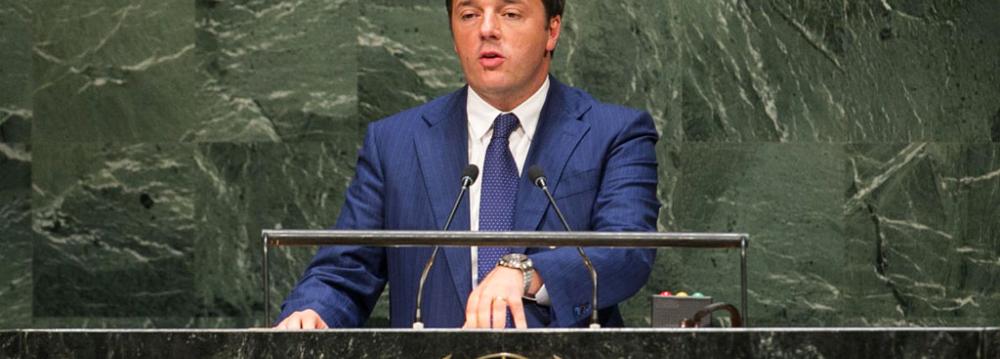Now that the Five Star Party has secured the mayor-ship of Rome, Italian Prime Minister Matteo Renzi probably understands what Benito Mussolini meant when he stated: "Governing the Italians is not impossible, it is merely useless." Attempts at reformation by Renzi have not yielded the hoped-for results.
Italy’s economy has shrunk by around 10% since 2007, as the country endured a triple-dip recession. Output has regressed to levels of over a decade ago. Overall unemployment is around 12-13%, with youth unemployment around 40%. Consumption and investment are flaccid, Independent online reported.
The damage is long term, with as much as 15% of Italian industrial capacity destroyed, reducing employment and growth potential. Once its strength, Italy’s smaller enterprises have contracted as a result of low sales, declining profitability and lack of financing.
Italy has a current account surplus of 1.9%, reversing a number of years of deficits. The change reflects the deterioration of the Italian economy rather than a change in its trading position.
Banking system problems have exacerbated the contraction. Italian banks are hamstrung by around €150-200 billion ($170-226 billion) of bad or doubtful loans, which has exposed inadequate capital and reserves. Unlike counterparts in the UK and US, Italian banks have been unwilling or unable to tackle the asset quality problem. This has constrained the supply of credit to the economy.
Debt Crisis
Total real economy (government, household and business) debt is around 259% of GDP, up 55% since 2007. This understates real liabilities as it ignores unfunded pension and healthcare obligations. Household debt is low, relative to peers. Its net international investment is -32% of GDP, superior to Spain (-92%) and Portugal (-100%).
Despite its commitment to fiscal reform, Italy is running a budget deficit of 3%. Government debt is $2.4 trillion approaching 140% of GDP. The government is tardy in paying suppliers, in an elaborate shell game to lower Italy’s overall debt levels and mollify the EU and investors. There is an estimated $160 billion in taxes uncollected each year, the third highest rate in western Europe.
Unbalanced Economy
Italy’s economy is increasingly unbalanced with high-end producers, such as those in luxury products and also advanced manufacturing, benefitting from demand from emerging markets. Other sectors, such as standard automobiles, domestic appliances and low-priced fabrics and clothes have found it difficult to compete with manufacturers based in emerging markets.
Domestic appliances or white goods exemplify Italy’s decline. In 2007, Italy, once a world leader in the sector, produced 24 million appliances. By 2012, it was down to 13 million; output of washing machines, dishwashers, refrigerators and cookers was down by 52%, 59%, 55% and 75% respectively. Italian manufacturers have shifted production to lower cost countries, resulting in large job losses.
These developments have increased the gap between the industrial north and the Mezzogiorno, the traditional term for the southern regions, which competes with emerging economies in price-sensitive sectors.
Structural Problems
There are other structural problems. In World Bank studies, Italy ranks 65th out of 189 countries for ease of doing business. Infrastructure, dating back to the immediate post World War II era, is in need of renewal and lags leading economies. Energy costs are high.
Italy spends less than 5% of GDP on education, compared with a 6.3% average across the OECD. The proportion aged 25-34 completing higher studies is 21%, compared with a 39% average for the OECD.
Italy’s large public sector and bureaucracy is legendary. Tax and other revenues are around 46% of GDP. According to the World Bank, the effective Italian corporate tax burden is around 65%.
The European average is around 41%, with only France (64%) and Spain (58%) in a comparable range. Switzerland and Croatia, both located close to Italy have tax rates of 29% and 20% respectably. This diverts investment away from Italy.


